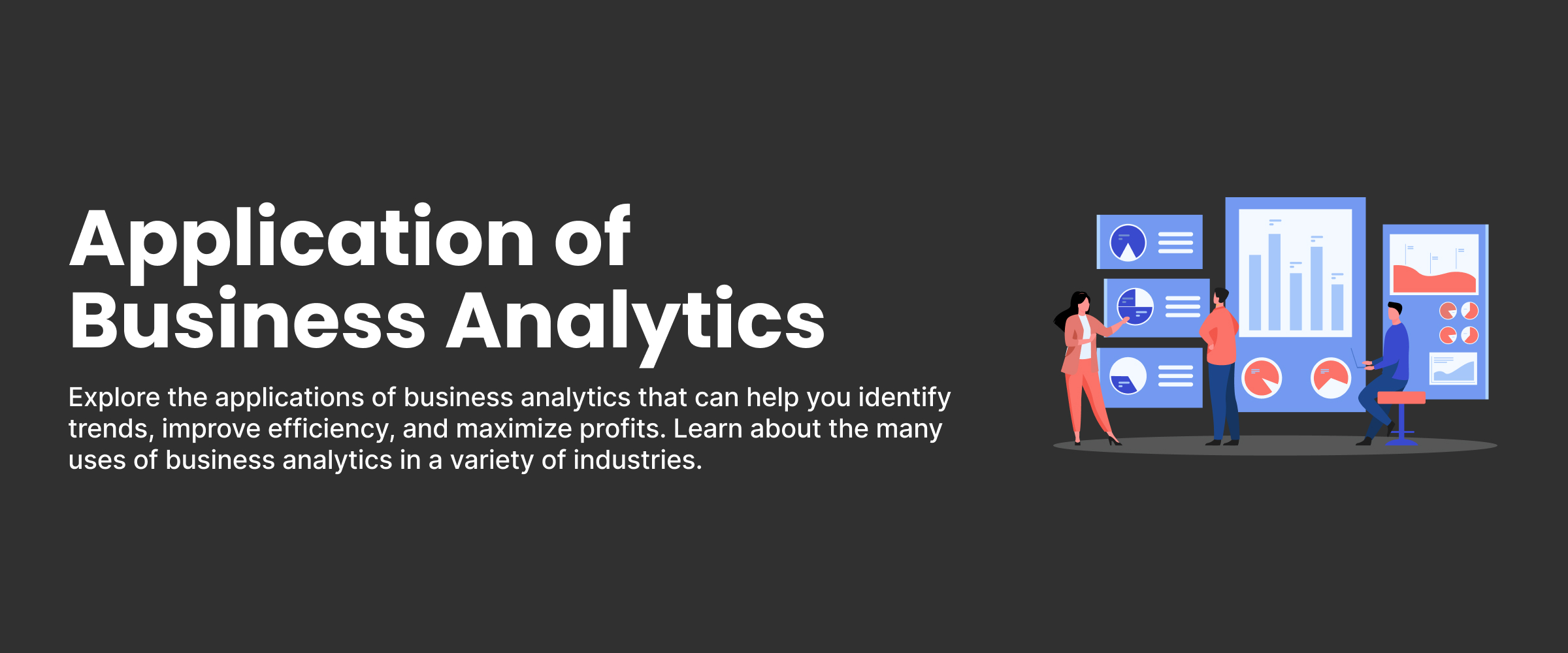

Leading companies like Microsoft, Tesla, Netflix, Coca-Cola, and Uber use business analytics for reasons ranging from improving productivity to refining advertisement strategy. If you want to work as a successful business analyst, it is time for you to learn about business analytics. This blog will explore the application of business analytics and its uses for you to understand how it works in real-life scenarios.
Table of Contents
Business analytics is a process that employs quantitative methods and technology to gain meaningful insights from data and use them to make informed business decisions. The process involves collecting, organizing, analyzing, and interpreting the data. Business analytics is vital for organizations to identify trends, patterns, and correlations, and improve business processes.
Business analytics aims to optimize business performance by identifying opportunities for growth and innovation. It uses various techniques and tools, such as predictive analysis, data mining, data visualization tools, software programs, statistical models, and machine learning algorithms to help with data-driven decision-making. You can learn more about optimizing business models and become a successful business analyst through an online business analyst course with placement.
Let us now understand the application of business analytics with the following examples:
CRM, or customer relationship management, is a set of methods used to maintain customer relationships. With CRM, organizations can gather, analyze, and leverage data, such as socioeconomic details, demographics, and buying patterns, to improve customer satisfaction. It also enhances the overall marketing strategy and helps companies make more sales.
Businesses want to know what people think about their brand to optimize their marketing strategy and product development. Sentiment analysis helps businesses achieve this objective by analyzing public sentiment from social media, customer reviews, and other sources. Natural language processing and machine learning techniques are used for this assessment.
Companies use A/B testing to test their digital marketing campaigns, webpage performance, product development, and more. It is an experiment where users are randomly assigned different versions of a product or service, and later, the performances of these different versions are compared. These insights help companies make decisions to improve user engagement and conversion rates. It is also known as split or bucket testing.
Risk management is essential for the smooth functioning of organizations, especially financial services. Therefore, it becomes necessary to employ fraud detection techniques, a vital application of business analytics. These techniques involve using advanced algorithms and machine learning models to identify and prevent fraudulent activities, such as insurance and credit card fraud in the finance sector.
Cash flow is the amount of cash or cash equivalents that a business generates or spends over some time. It indicates the health of a company. The analytics analyze the cash flow by measuring real-time metrics, such as cash conversion cycles, net sales ratio, free cash flow, and working capital ratios. A cash flow statement takes into account cash flow from operations, investing, and financing activities.
Businesses can estimate the cost of the final manufactured product with cost modeling. It helps analyze the cost of various factors, such as material, production, labor, sales, research and development, and administration, which is vital for calculating the cost of manufactured products.
Supply chain optimization involves analyzing supplier performance, inventory levels, demand forecasting, and logistics. With insights into supply chain inefficiencies, organizations can improve operational efficiency, reduce waste, improve product availability, reduce costs, and gain a competitive advantage in the market.
Predictive analysis utilizes historical and real-time data to forecast future trends and events. This application is harnessed primarily in industries like healthcare, finance, and e-commerce to improve disease identification, predict stock prices, and optimize business operations.
Resource management involves optimizing the allocation of assets, personnel, and funds to maximize efficiency and profitability. Organizations can forecast demand and allocate resources strategically with data-driven insights. This can help them mitigate risks and capitalize on growth opportunities.
Every organization wants a productive and competent workforce. The performance of employees is evaluated by their productivity and engagement in the company. Several factors are taken into consideration, such as attendance, employee feedback, and data on key performance indicators.
Customer segmentation is a strategy where the customer base is divided into groups based on distinct characteristics, such as demography, behavior, geography usage, and benefit. It leads to targeted marketing efforts, relevant product offerings, and personalized experiences because when you start an online business, this can grasp your customers’ diverse preferences and needs.
Businesses use market basket analysis to identify patterns from the customer’s purchase history about things bought together. With this, they optimize their promotional strategy and product placement to enhance customer experience and increase sales.
Churn analysis involves identifying and reducing customer churn, or the rate at which the customers stop the use of products and services of a company. This analysis analyzes customer behavior and feedback to understand the problem areas and formulate new strategies to retain valuable customers and revenue loss.


Here are some of the top industries where business analytics plays an essential role in making decisions and optimizing operations:
Business analytics is widely used today in organizations to improve efficiency and profitability. Here are some of its popular uses in the business world:
The application of business analytics has greatly improved business operations and increased productivity. It is used in several industries, such as healthcare, manufacturing, retail, and marketing. Due to business analyst jobs on the rise and lucrative salary packages, it has become a much sought-after field in the current job market. You can explore a data science course to learn more technical details about business analytics.
Did you find this blog informative? Share your thoughts with us in the comments section below. Also, check out our business communication course to excel in this field.